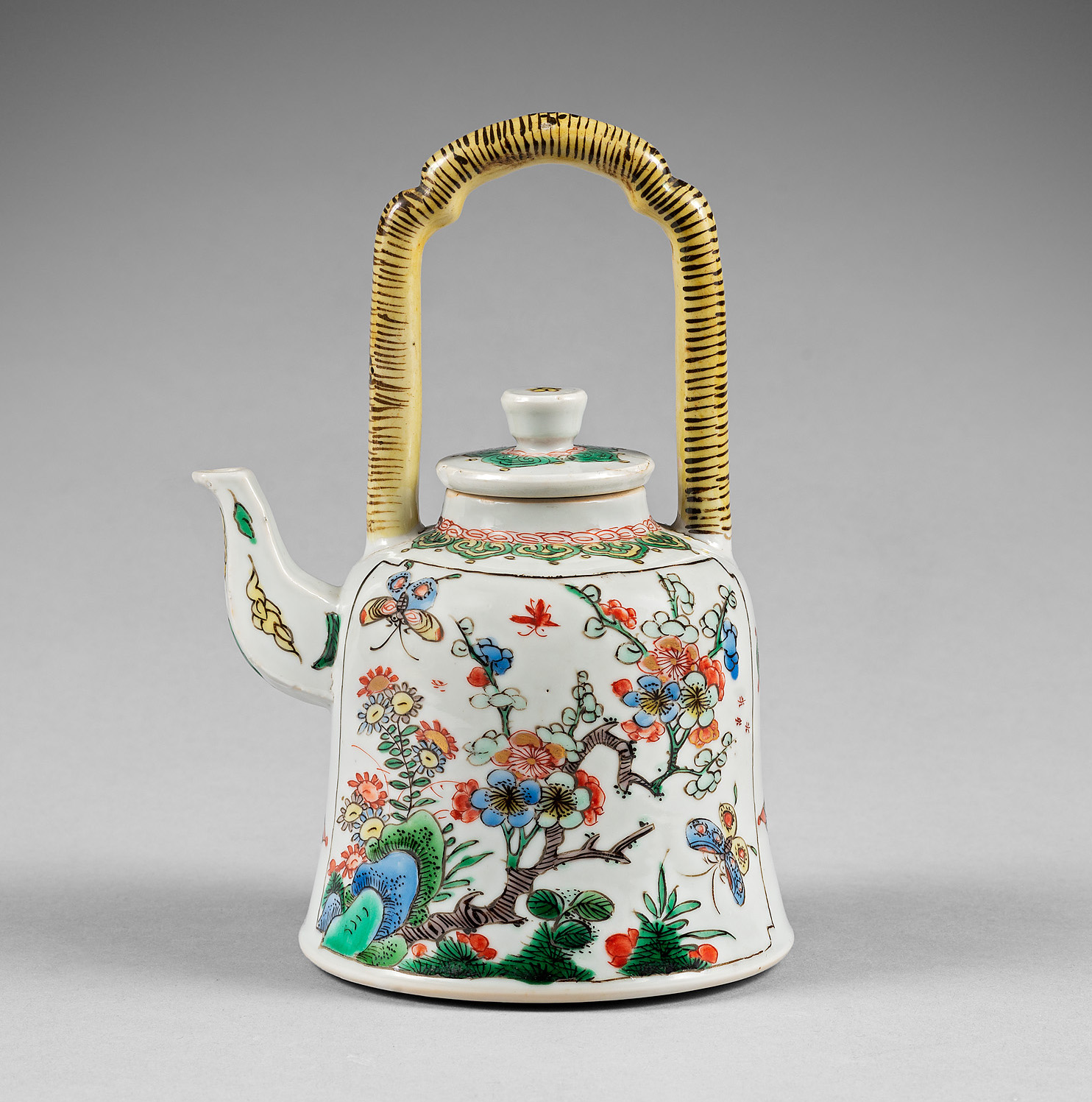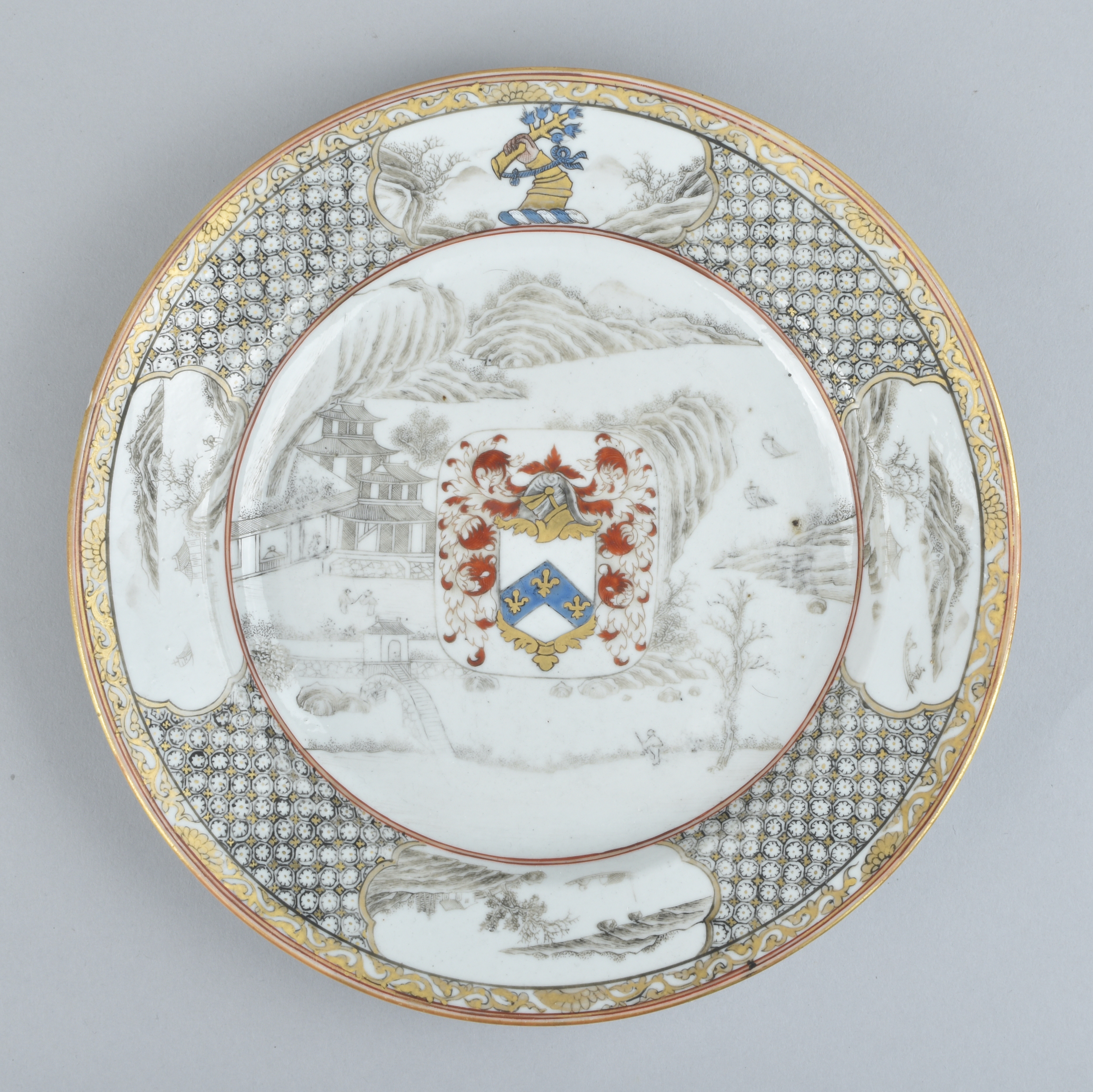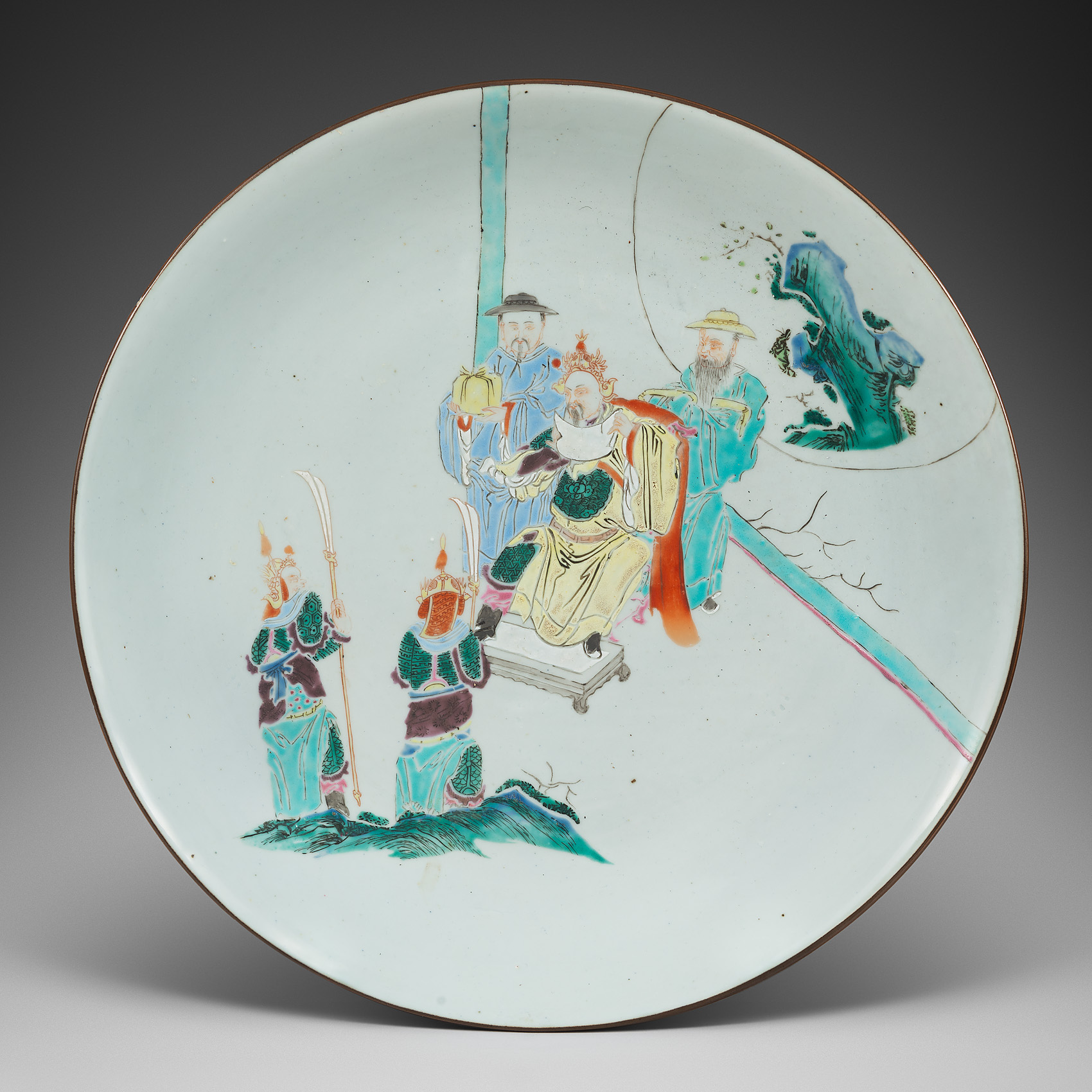
A Japanese Kakiemon teapot and cover. Edo period, late 17th c.
The hexagonal lobed teapot and cover decorated in iron-red, blue, green, yellow and black enamels with a blue bird with outstretched wings perched in a branch amidst flowers and foliage, beneath a ruyi and dentil border, the wide rounded handle and the short curved spout with karakusa and yellow flowers, the fitted cover similarly decorated, the finial in shape of a flower bud.
- Country:
- Japan
- Period :
- Edo (1603-1867), late 17th c.
- Material:
- Porcelain
- Dimension:
- 5.90 in. (15 cm)
- Reference :
- E276
- Status:
- sold
Related works
An identical example is illustrated by Christiaan Jörg in 2003, no. 241.
Another example is in the collections of the Ostasiatiska museet (Stockholm), dated c.1680-1700, inventory number OM-1987-0122.
For an Arita blue and white version, see Christiaan Jörg, Fine and Curious, Japanese Export Porcelain in Dutch Collections, 2003, p. 193, no. 240.
Notice
The Japanese potter Kakiemon Sakaida (1596-1666) is popularly credited with being one of the first in Japan to discover the secret of overglaze enamel decoration on porcelain, known as ‘Akae’. The Kakiemon kiln, in the Japanese town of Arita on the southern island of Kyushu, was founded in around 1670 and specialised in the production of these wares that were typically decorated with a yellow, red, blue and turquoise palette set against a milky-white ground. After the fall of the Chinese Ming dynasty in 1644, Dutch traders began to import Kakiemon porcelain to Europe where it became extremely popular. This eventually led to the imitation of Kakiemon patterns onto cheaper white porcelain produced in Europe, namely at the Chantilly, St Cloud, and in England at Bow and Chelsea.

























